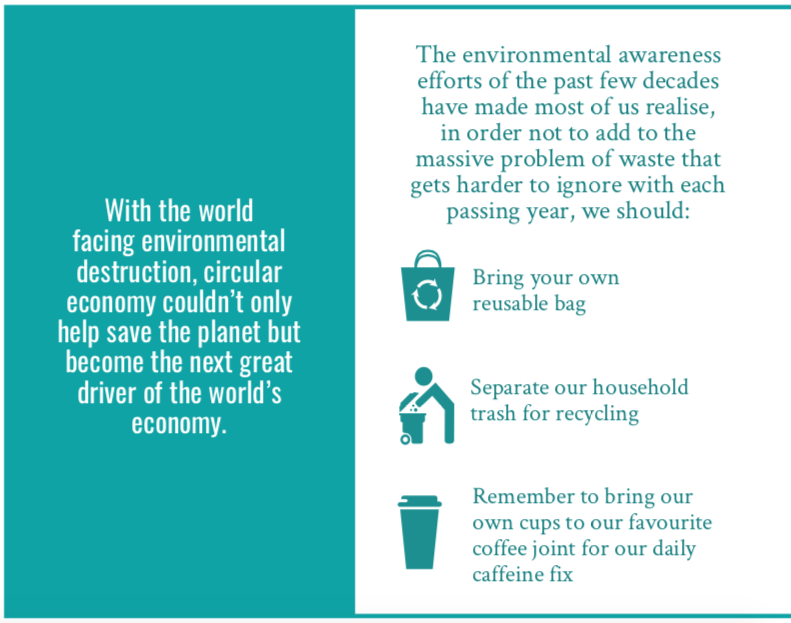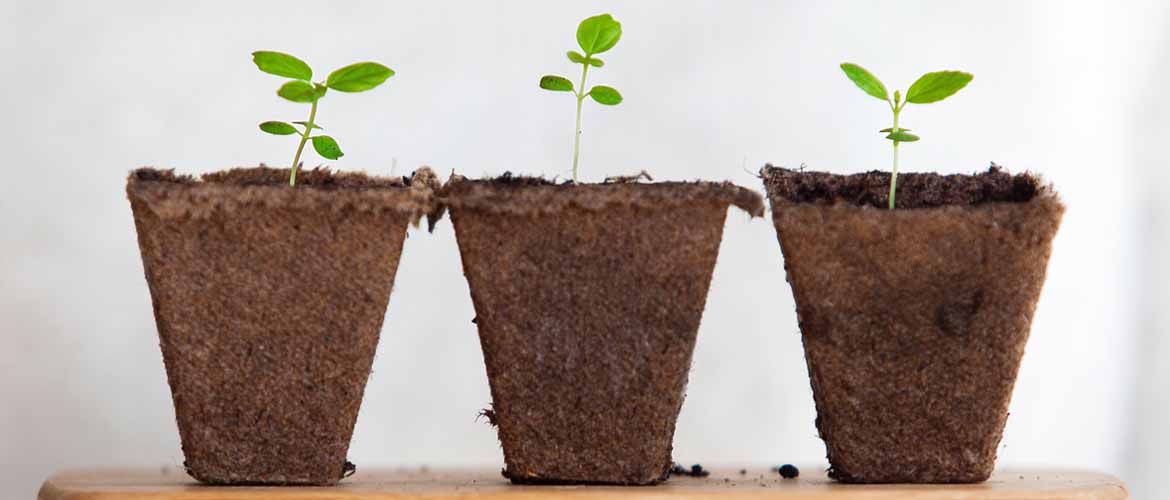Sustainability’s Vital Ingredient
Studies have shown how sustainability is crucial to our planet’s survival. Here, Sehra Yeap deliberates on sustainability’s main ingredient for its endurance, a new economic model. This article was first published in the second issue of WIEF In Focus magazine.
We’ve all seen those distressing images in our newsfeed, such as teeming seas of garbage, enormous piles of landfill and floating plastic waste killing marine life.
Yet, for all that, there it all is. The Great Pacific Garbage Patch, first discovered around 1985 – 1988 in the Pacific Ocean, is a sea of floating plastic and chemical sludge stretching about 1.5 million square kilometres. That’s about three times the size of France and it’s not the only one. There’s one in the North Atlantic Ocean, too.
The Plastics Crisis
The biggest challenge facing the planet’s health today is the sheer size of what’s called ‘the plastics crisis’. The worst affected environment is the world’s oceans, lakes and waterways. At the June 2017 United Nations Oceans Conference in New York, Secretary-General Antonio Guterres said that by 2050, the oceans may contain more weight in plastics than fish. The issue is already critical, with those giant islands of waste found in the Pacific and Atlantic Oceans, the Caribbean and elsewhere.
 Dutch non-profit organisation, The Ocean Cleanup, has tackled the issue by developing technologies that are expected to eliminate half of the Great Pacific Garbage Patch within five years. But that’s just one part of what is an enormous global problem. The Ocean Cleanup calculates that rivers annually transport between 1.15 and 2.41 million metric tonnes of plastic waste into the world’s oceans – two-thirds comes from the 20 most polluting rivers, with most in Asia. The Ocean Cleanup founder and CEO, Boyan Slat, explained, ‘For our work in the deep ocean to succeed in the long run, it’s crucial that governments and other organisations speed up their efforts to mitigate the sources of the problem we aim to resolve.’
Dutch non-profit organisation, The Ocean Cleanup, has tackled the issue by developing technologies that are expected to eliminate half of the Great Pacific Garbage Patch within five years. But that’s just one part of what is an enormous global problem. The Ocean Cleanup calculates that rivers annually transport between 1.15 and 2.41 million metric tonnes of plastic waste into the world’s oceans – two-thirds comes from the 20 most polluting rivers, with most in Asia. The Ocean Cleanup founder and CEO, Boyan Slat, explained, ‘For our work in the deep ocean to succeed in the long run, it’s crucial that governments and other organisations speed up their efforts to mitigate the sources of the problem we aim to resolve.’
Is the fact that we’re bringing bags to the supermarket and getting our lattes to go in reusable cups making any difference at all? The short answer is yes – because little by little, our efforts are feeding into something called the circular economy. The theory of a circular economy has its origins in academic circles of the 1960s and 70s but only began to be adopted by businesses after 2000. It has slowly been gaining widespread acceptance only in the past few years. The traditional product cycle is linear or ‘make, use and dispose’ – new resources are exploited to manufacture products, the products are used by consumers and then end up as trash.
Designed to be Recycled
In a circular economy, products are designed to be easily recycled. Waste produced during the manufacturing, distribution and transportation is also recycled. After the consumer uses a product it is eventually recycled, creating a closed loop.
Companies of all sizes have seen the potential and are integrating the circular economy into their business models. Industries like steel are also well positioned to use the circular economy. This is because, for every tonne of scrap metal recycled, approximately 6.79 tonnes of carbon dioxide (CO2) – the main greenhouse gas warming the planet – doesn’t enter the atmosphere. Steel makers around the world are following suit, collecting and recycling steel they have produced and sold, and then re-manufacturing it as new products.
Another critical area is food waste. According to the World Business Council for Sustainable Development (WBCSD), one-third of all food produced globally goes to waste, including half of all fruits and vegetables. That’s 1.3 billion metric tonnes of food, at annual cost of USD800 million. Food waste produces 4.4 gigatons of CO2 every year globally. In other words, if food waste was a country, it would be the world’s third biggest emitter of CO2, after the United States and China.
The current perception of environmental responsibility is that it costs more to be good global citizens, that taking steps to recycle manufacturing waste costs more than just dumping it into the nearest landfill or river. The WBCSD is working to change that perception, and to convince companies that good practices not only cost less but can actually be profitable. WBCSD is developing seamless circular economy networks that any company can plug into and use.
A USD4.5 Trillion Opportunity
WBCSD Managing Director, Dr Maria Mendiluce told a TEDx Talks audience, at Vienna’s Donauinsel Island that enterprises should be ready to take advantage of a ‘USD4.5 trillion opportunity’. ‘It’s not only an opportunity for big business, but an opportunity for all of us,’ she added. A key part of putting the concept to work is increasing the value of waste. CO2 is a perfect example. Over 180 companies are participating in the WBCSD’s Low Carbon Technical Partnership initiative (LCTPi), with many of them in the transport and logistics sectors.
Seeking solutions, scientists at California’s Berkeley University, China’s Dalian Institute and other research centres are recovering CO2 from food waste as well as other sources and converting it into biofuels for machinery, vehicles and power plants, along with soil-enriching fertilisers and low pollution incinerators. The resulting biofuels are already being used by large transport firms and are having a significant impact on reducing fossil fuels used by private cars and trucks.
You Must Do Your Part
It’s not just businesses that need to undertake a radical shift toward sustainability and a circular economy. You must also become part of a collaboration that includes producers, consumers and recyclers. However, other than local recycling programs, there are presently very few national and no coordinated global recycling initiatives to gather discarded consumer products.
With the world facing environmental destruction, circular economy couldn’t only help save the planet but become the next great driver of the world’s economy. Our individual efforts may count, but with the global scale of this crisis, it’s still up to governments and corporations to consolidate these efforts into truly meaningful solutions.
___________________
Photo by Daniel Hjalmarsson on Unsplash
For more on the latest topics related to business, technology, finance and more, read our digital versions of In Focus magazine, issue 1,issue 2 and issue 3.





